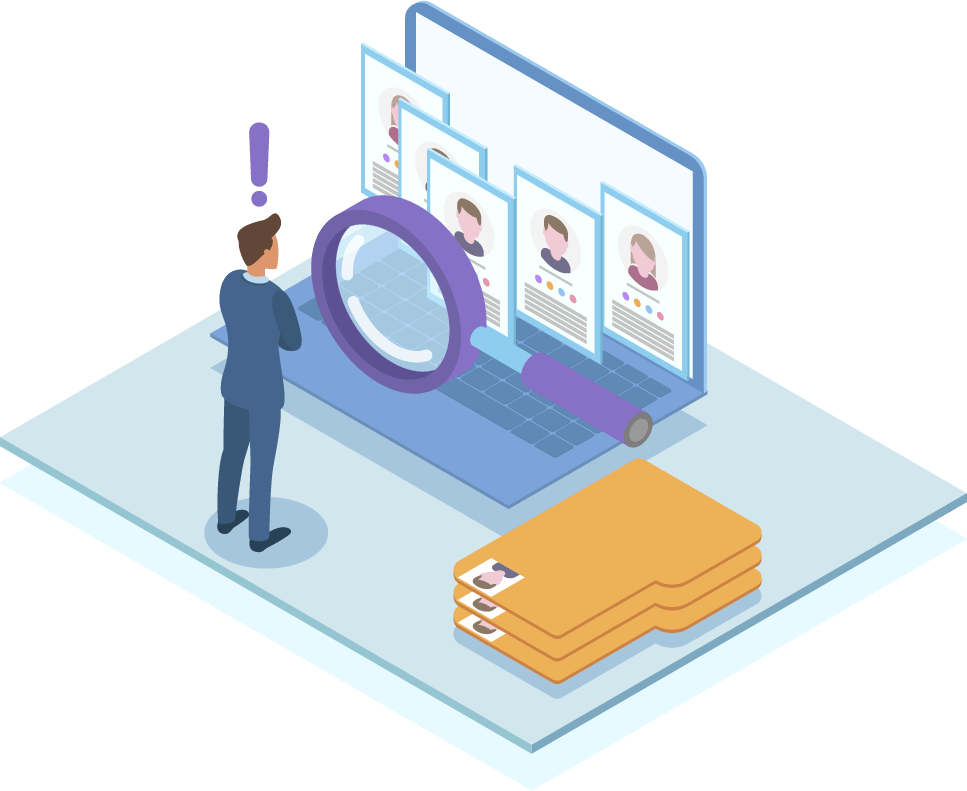Drawbacks of Employee Monitoring and How to Address Them
-
Tomasz Celler
- March 8, 2019
- 6 min read

Almost every company uses some kind of employee monitoring software and it’s totally understandable – it increases transparency in the workplace, reduces financial losses caused by unproductively spent work time, improves data security and brings many other benefits but like everything in this world – it’s not ideal and has its downsides. Even if the pros definitely outweigh the cons, knowing how to address them will help you get the most out of your employee monitoring software.
Is employee monitoring software legal?
![]()
If you work in the United States, you can monitor the activity of your employees on the hardware that your company owns. Also, if you are the owner of the email system used by your employees, then you can monitor their email correspondence. You can also listen to your employees’ phone calls at work unless you realize that the phone call is private. However, if employees have been told not to use business phones for private calls, they take the risk that their conversation may be monitored. You can use GPS for tracking the location of company-owned vehicles and other equipment.
The legality of monitoring employees actions on the equipment that belongs to the worker and is not owned by the company is more complicated. You should ensure that the employee that uses his own devices for work purposes is well informed about the Bring Your Own Device (BYOD) policy in your company. Also, in many states, it is forbidden to ask for employees user name and/or password to social media accounts, and some states have laws protecting employees from being disciplined by the employer based on their off-duty social media activity unless it can be shown to hurt the company’s interests. It’s worth noting that more specific laws are being enforced in California, and employers have less freedom in monitoring their employees.
In Europe, on the other hand, gathering and processing data is regulated by the GDPR – General Data Protection Regulation. Personal data under GDPR means “any information relating to an identified or identifiable natural person”, so it includes information about your employees. It must be processed in a lawful and transparent manner, which means that you have to inform your employees that they are being monitored, as well as to disclose the reason why you are monitoring them. Moreover, you can collect only the kind of data that is necessary to fulfill the specific purpose, and it can’t serve any other purpose that‘s not compatible with the original one. In other words – if you’re collecting data about your employees, you have to tell them that you are doing this, why you’re doing this and collect only the information that you really need and just for the time that you need it.
If you want to know more about implementing employee monitoring software in a legal way, check out this article.
How does employee monitoring affect privacy and trust in the workplace?
Many employees working in the company that monitors their actions feel that their workplace privacy is very limited and as a result, they feel more fatigued and less motivated to work. It is strongly connected with trust in the workplace – when privacy is limited people tend to feel that the employer doesn’t trust them, and in turn, they don’t trust the employer and their managers. And it has been shown, in the study published in the Journal of Economic Behaviour and Organization in 2015, that trust directly impacts job performance and productivity.
Employee monitoring may negatively affect workplace privacy unless you address specific issues that may arise if you implement employee monitoring improperly. Although it’s never too late to fix problems with employee privacy and trust, it is definitely better to tackle the problem before it arises.
There are a few steps that you can take while implementing employee monitoring software in your business to prevent the detrimental consequences from happening:
Explain to your workers what are your expectations about what they should and shouldn’t do at work – and tell them what are the consequences of failing those expectations. However, you should remember that it’s not possible to be at a peak, superhuman productivity all the time and that the feeling of privacy and trust in the workplace is important for good job performance.
Tell your employees that you are monitoring their actions – explain the reason why you’re doing this. It’s most likely that they will understand your point of view and will feel trusted.
Let your employees see how they are doing – if you track their work time, productive and idle time or attendance, give your employees access to this information. They will feel that you trust them and they will see how productive they are resulting in their will to be more productive.
Confront issues in a timely manner – don’t wait until the problem with your employee grows to an unimaginable size. If you see that employee is very unproductive, frequently absent or whatever the problem is – dialogue should be the first step you take and it shouldn’t be delayed.
What about stress?
Stress is a kind of mental and physiological arousal and according to the first Yerkes-Dodson law, to reach the optimal level of performance, the optimal level of arousal is needed – productivity is hurt by both too low levels of stress or stimuli and too high. The second law states that the optimal arousal level is different for tasks of different difficulty. It means that for employees performing easy, repetitive tasks increased level of stress caused by employee monitoring can be helpful for achieving the optimal level of arousal, yet for those who usually perform difficult, complex tasks it will be disturbing and their productivity and focus will suffer.
The first step to take on a way to decrease work-related stress is to identify the problem. Increased idle time and frequent absence may indicate that your employee is not coping with stress well and needs your help. Maybe he or she is overloaded with work and your monitoring software can even help you to discover if that’s the case. It may also cause the employee to think that if they aren’t meeting specific results that you analyze using employee monitoring software, he or she will lose the job. To prevent this kind of mindset implement your employee monitoring solutions gradually and inform your employees about the changes it will cause.
How to keep your employee data safe?
Using employee monitoring software and gathering a lot of data is inseparable. Keeping it safe is a must – for the good of your employees and your business. The easiest thing you can do to strengthen your data security is to establish strong passwords, a critical aspect of IT incident management. They should be combined with capital and lower-case letters, numbers, and symbols and should be from 8 to 12 characters long. Moreover, it shouldn’t contain sequences of letters or numbers or those that are close on the keyboard. Next step is to put up a firewall and install antivirus software or virus removal tool. If your workers use laptops, mobile phones or any other portable devices, make sure they’re encrypted, so without a correct password, it is impossible to read the information stored on the hard drive. To avoid losing data you should also schedule regular backups to an external hard drive or to the cloud. Creating a data safety policy and familiarizing your employees with rules and consequences of breaking them is a good idea. Additionally, to prevent phishing attacks, implement email authentication technique, such as Sender Policy Framework, that helps protect email senders and recipients from spam, phishing and spoofing. Additionally, you can use a link tester to test any URL before clicking it. However, the most difficult thing to do, yet one of the most important, is educating your employees about proactive defense and online safety. However, the most difficult thing to do, yet one of the most important is educating your employees about proactive defense and online safety.
To sum it up…
Employee monitoring is a standard and has been for a long time. However, with technology these days it’s becoming more and more advanced, bringing more and more ethical and legal concerns. Such sophisticated monitoring tools may induce privacy, trust and stress issues in the workplace, and collecting so much data must be followed by establishing safety procedures. All in all, when implemented correctly all of the problems caused by employee monitoring are avoidable or possible to solve, once they occur.






March 8, 2019 at 15:09
Thanks for sharing such a detailed article on drawbacks of employee monitoring and addressing them.
October 3, 2019 at 13:23
Thanks, Ewa, for sharing a great article about drawbacks of Employee Monitoring. The usage of Employee Monitoring software now becomes necessary for all kind of businesses.